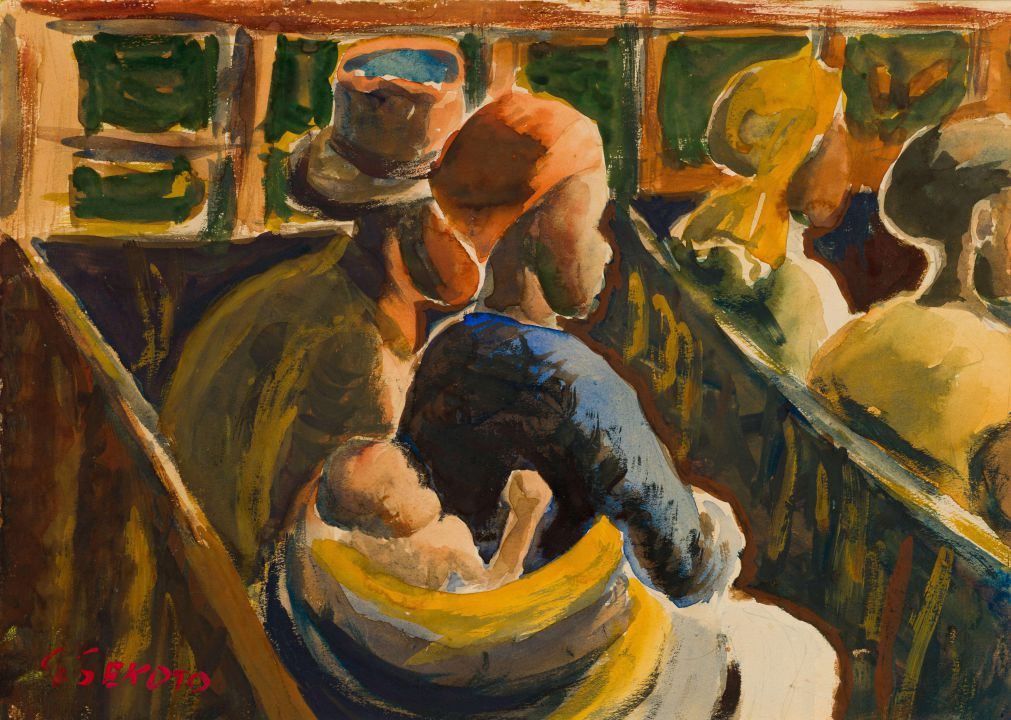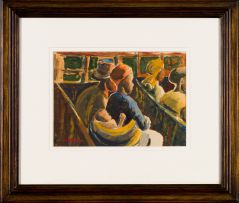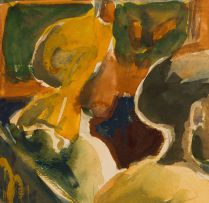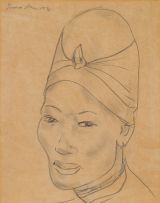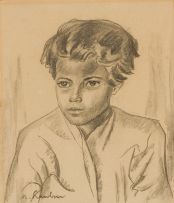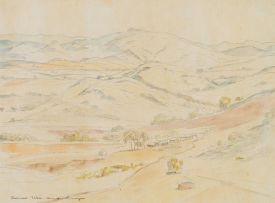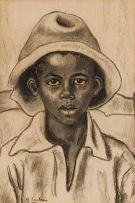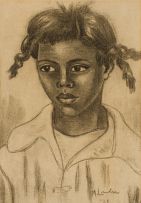Modern, Post-War and Contemporary Art and South African Fine Wine
Live Virtual Auction, 26 - 28 July 2020
Tuesday Evening Sale
Incl. Buyer's Premium & VAT
About this Item
signed; inscribed with the artist's name, the date, the title and the medium on a Johans Borman Fine Art Gallery label adhered to the reverse
Notes
Waiting Room and Going Home, were done near the beginning of Gerard Sekoto's career, in 1940, not long after he left his job as a teacher in Pietersburg (Polokwane) and relocated to Sophiatown, Johannesburg, in 1939, to pursue a career as a full-time artist. During the first five years of his career, with the support of gallerists, collectors, fellow artists and the press, he gained in reputation, despite the significant barriers faced by black artists at the time. His art provides a visual representation of life in South Africa for the poor black city dweller. In The Waiting Room, a woman with a baby on her back sits on a row of benches, waiting patiently, while in Going Home a group of workers carry their bags and parcels, heading home after a day's work. Sekoto's work is most appreciated for its ability to captivate the viewer, setting a scene that tells a story. The emotional interest is heightened by the colour, tone and texture of the work that aesthetically draw the viewer in. These two works show the early prowess of the artist that lead to his standing in the artworld today.
Exhibited
Wits Art Museum, Johannesburg, Song for Sekoto 1913-2013, retrospective exhibition to celebrate the centenary of the artist's birth, 26 April to 2 June 2013.
Literature
Gerard Sekoto Foundation (2013) Song for Sekoto: Gerard Sekoto 1913-2013, exhibition catalogue, Johannesburg: The Gerard Sekoto Foundation, illustrated in colour on page 34.
